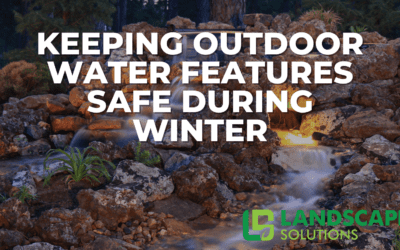
As climate change leads to longer and more severe dry spells, incorporating drought-tolerant plants into your garden design is becoming increasingly important. These plants not only conserve water but also reduce maintenance and resources, providing a sustainable and beautiful alternative to traditional, water-intensive landscaping. Here’s a comprehensive guide to some of the best drought-tolerant plants that can thrive in your garden and keep it looking vibrant even during dry periods.
1. Aster (Symphyotrichum spp.)
Zones: 3-8
Exposure: Full sun to partial shade
Bloom Time: Summer to fall
Height/Spread: 1 to 6 feet tall, 1 to 4 feet wide
Uses: Naturalized in meadows or mixed borders to attract pollinators like bees and butterflies.
Asters are late-season bloomers that produce daisy-like flowers in hues of purple, blue, white, or pink. These tough plants can tolerate a wide range of conditions, although they prefer rich, well-draining soil.
2. Beardtongue (Penstemon spp.)
Zones: 3-9
Exposure: Full sun
Bloom Time: Spring to early summer
Height/Spread: 6 to 96 inches tall, 8 to 20 inches wide
Uses: Ideal for rock gardens, curbside plantings, or cottage-style borders.
This diverse group of North American natives features nectar-rich tubular flowers that attract butterflies, bees, and hummingbirds. They come in a wide range of colors, making them a versatile addition to any garden.
3. Black-Eyed Susan (Rudbeckia spp.)
Zones: 3-9
Exposure: Full sun
Bloom Time: Summer to early fall
Height/Spread: 1 to 4 feet tall, 1 to 2 feet wide
Uses: Suitable for waterwise borders, cottage gardens, or naturalized meadows.
Black-Eyed Susans are known for their long-blooming, daisy-like flowers in rich tones of gold, bronze, and brown. Their coarse-haired, green foliage is deer-resistant, making them a practical choice for many landscapes.
4. Blanket Flower (Gaillardia spp.)
Zones: 3-10
Exposure: Full sun
Bloom Time: Summer to fall
Height/Spread: 1 to 3 feet tall, 1 to 2 feet wide
Uses: Perfect for curbside strips, slopes, or rock gardens.
These colorful flowers thrive in dry, sunny conditions and lean soil. They attract bees and other pollinators, while their seed heads provide food for songbirds.
5. Blue Fescue (Festuca glauca)
Zones: 4-8
Exposure: Full sun
Bloom Time: Late spring to summer
Height/Spread: 10 to 12 inches tall, 24 to 28 inches wide
Uses: Adds color and texture contrast in landscapes and containers.
This ornamental grass provides multi-seasonal interest with its evergreen foliage and elegant seed heads. It’s suitable for small spaces and can enhance the aesthetic of summer bloomers like salvias and coneflowers.
6. Bugleweed (Ajuga reptans)
Zones: 3-10
Exposure: Sun to shade
Bloom Time: Mid to late spring
Height/Spread: 6 to 9 inches tall, 6 to 12 inches wide
Uses: Ideal for erosion control along slopes and around trees and shrubs.
Bugleweed is a tough, mat-forming groundcover with attractive flowers and foliage. It grows well in a variety of conditions and can spread vigorously, making it perfect for challenging sites.
7. Catmint (Nepeta spp.)
Zones: 3-8
Exposure: Full sun to partial shade
Bloom Time: Late spring to fall
Height/Spread: 2 to 3 feet tall and wide
Uses: Pairs well with other drought-tolerant perennials in mixed borders.
Catmint is a reliable, low-maintenance perennial with long-blooming flower spikes in shades of blue, white, or pink. It tolerates various soil conditions and attracts pollinators.
8. Cranesbill Geranium (Geranium spp.)
Zones: 3-9
Exposure: Full sun to partial shade
Bloom Time: Spring to fall
Height/Spread: 6 to 24 inches tall, 6 to 36 inches wide
Uses: Effective for erosion control, pathway edging, and mixed borders.
Cranesbill geraniums are hardy, long-lived perennials that can thrive in drought and poor soil conditions. They are versatile and come in various forms, from ground-hugging to tall upright varieties.
9. Hen and Chicks (Sempervivum tectorum)
Zones: 3-8
Exposure: Full sun
Bloom Time: Summer
Height/Spread: 1 to 2 feet wide, rosettes grow 2 to 4 inches tall.
Uses: Perfect for rock walls, stone containers, and pathway edging.
These succulents form mat-like clumps of rosettes with fleshy leaves in shades of green, blue-green, or red. They are virtually maintenance-free and adapted to dry conditions.
10. Lantana (Lantana camara)
Zones: 9-11 (annual in colder regions)
Exposure: Full sun
Bloom Time: Late spring through frost (nearly year-round in frost-free areas)
Height/Spread: 2 to 6 feet tall, 3 to 10 feet wide as a perennial shrub.
Uses: Suitable for containers, dry borders, and groundcovers.
Lantana is known for its long-lasting, vibrant flowers that attract butterflies. It’s a resilient plant that can handle heat and drought.
11. Lavender (Lavandula spp.)
Zones: 5-9
Exposure: Full sun
Bloom Time: Summer
Height/Spread: 1 to 3 feet tall, 1 to 5 feet wide
Uses: Great for slopes, herb gardens, and mixed borders.
Lavender thrives in heat and dry conditions. It’s prized for its aromatic flowers and foliage, adding a sensory element to your garden.
12. Moss Rose (Portulaca spp.)
Zones: 10-11 (annual in colder regions)
Exposure: Full sun
Bloom Time: Summer to frost
Height/Spread: 3 to 12 inches tall, 6 to 24 inches wide
Uses: Ideal for containers, rockeries, and curbside strips.
This low, spreading plant has small, rose-like flowers in a range of bright or pastel colors. It’s heat and drought-tolerant, thriving in poor soil and neglect.
13. Pinks (Dianthus spp.)
Zones: 3-9
Exposure: Full sun to partial shade
Bloom Time: Spring to early summer
Height/Spread: 4 to 36 inches tall, 4 to 24 inches wide
Uses: Suitable for groundcovers, rock gardens, and pathway edging.
Pinks are known for their frilly, clove-scented flowers that come in nearly every color. They are well-adapted to dry conditions and provide a classic cottage garden appeal.
14. Purple Coneflower (Echinacea purpurea)
Zones: 3-9
Exposure: Full sun
Bloom Time: Mid-summer to fall
Height/Spread: 2 to 5 feet tall, 1.5 to 2 feet wide
Uses: Attractive to pollinators, suitable for mixed borders.
Native to North American prairies, purple coneflower is heat and drought-tolerant, easy to grow, and virtually maintenance-free.
15. Russian Sage (Perovskia atriplicifolia)
Zones: 4-9
Exposure: Full sun
Bloom Time: Mid to late summer
Height/Spread: 4 to 5 feet tall, 3 feet wide
Uses: Makes a statement in dry borders or curbside plantings.
Russian sage has dramatic spiky blue flowers that thrive in hot, dry conditions. It’s a robust plant that requires minimal care once established.
16. Sage / Salvia (Salvia spp.)
Zones: 5-9
Exposure: Full sun
Bloom Time: Spring to fall
Height/Spread: 1 to 4 feet tall, 1 to 3 feet wide
Uses: Suitable for waterwise borders, curbside plantings, and containers.
Salvia is a large group of plants with aromatic foliage and flowers in various forms and colors. They attract bees, butterflies, and hummingbirds, adding life to your garden.
17. Spurge (Euphorbia spp.)
Zones: 4-11
Exposure: Full sun
Bloom Time: Spring to fall
Height/Spread: 6 to 36 inches tall and wide
Uses: Ideal for rockeries, curbside strips, and dry borders.
Euphorbias are grown for their exotic flower bracts, foliage, and architectural forms. They are heat and drought-tolerant, requiring little care once established.
18. Stonecrop / Sedum (Sedum spp.)
Zones: 3-11
Exposure: Full sun to partial shade
Bloom Time: Summer to fall
Height/Spread: 2 to 36 inches tall, 12 to 24 inches wide
Uses: Perfect for groundcovers, waterwise borders, and curbside plantings.
Sedum is a drought-tolerant succulent that comes in various sizes, forms, and colors. They prefer lean, well-draining soil and hot, dry conditions.
19. Wormwood (Artemisia spp.)
Zones: 3-10
Exposure: Full sun
Bloom Time: Summer to fall
Height/Spread: 1 to 5 feet tall, 1 to 12 feet wide
Uses: Suitable for hot, dry sites and containers.
Wormwood is grown for its aromatic silvery foliage and essential oils. It’s a quick-growing herb that thrives in semiarid conditions.
20. Yarrow (Achillea spp.)
Zones: 3-11
Exposure: Full sun
Bloom Time: Summer
Height/Spread: 1 to 3 feet tall, 2 to 3 feet wide
Uses: Perfect for mixed borders and pollinator gardens.
Yarrow is a versatile native plant that tolerates heat, cold, humidity, and poor soils. It’s known for its long-blooming flower clusters that attract butterflies and other pollinators.
Drought-Tolerant Landscaping Tips
- Replace Thirsty Lawns: Swap out water-hungry turf with drought-tolerant groundcovers like creeping thyme or sedums.
- Amend Soil: Add compost and organic matter to improve moisture retention, except for plants that prefer lean soil.
- Foliage and Texture: Choose plants with interesting foliage, textures, and structures to maintain visual interest even after blooming.
- Mulch: Use organic mulch or small stones to suppress weeds and retain moisture.
- Efficient Watering: Install drip irrigation systems and water early or late in the day to minimize evaporation.
- Hardscaping: Incorporate boulders, patios, and pathways with permeable materials to add structure and manage water runoff.
Transform your garden into a sustainable, low-maintenance oasis with these drought-tolerant plants and landscaping tips. For expert advice and personalized landscaping solutions, contact Landscape Solutions at (615) 852-5009 or visit our website. Let us help you create a beautiful, water-wise garden that thrives in any climate.



